Have you ever wondered how a magnificent royal palace transformed into the iconic Louvre Museum we know today?
Steeped in history and brimming with artistic treasures, the Louvre’s evolution from regal residence to cultural mecca is a journey worth exploring.
From the grand halls that once housed kings to the masterpieces that now adorn its walls, the Louvre’s tale is a captivating blend of past grandeur and present-day allure.
Explore the intricate layers of this transformation and uncover the hidden stories that make the Louvre a timeless marvel.
Key Points
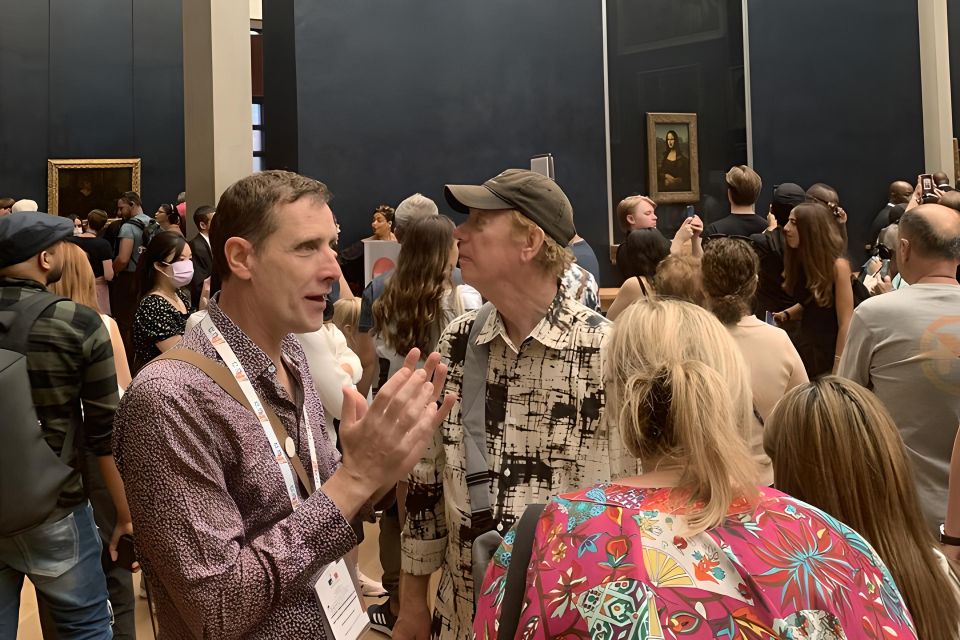
- Explore Louvre’s transformation from royal palace to iconic museum.
- Discover hidden dungeons, kings’ apartments, and imperial treasures.
- Witness famous artworks like Mona Lisa and Venus of Milo.
- Enjoy a private tour with a knowledgeable guide and small group size.
Louvre’s Transformation Over Centuries
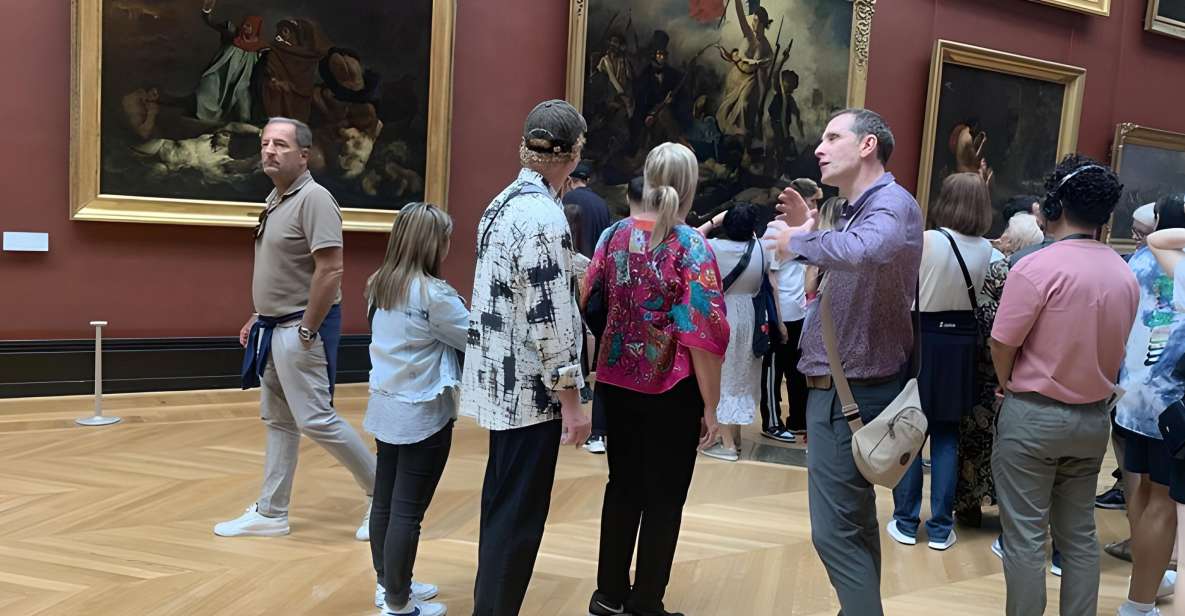
The Louvre has undergone significant transformations throughout the centuries, evolving from a medieval fortress to a world-renowned museum showcasing iconic works of art. Its evolution holds immense historical significance, reflecting the shifts in power, architectural styles, and cultural priorities over time.
Originally constructed as a defensive fortress by King Philip II in the late 12th century, the Louvre gradually expanded under subsequent rulers, including King Charles V, who transformed it into a royal residence. During the French Revolution, the Louvre shifted from a palace to a public museum, symbolizing a pivotal moment in the democratization of art. This evolution highlights the Louvre’s dual identity as both a historical landmark and a treasure trove of artistic masterpieces.
You can also read our reviews of more tours and experiences in Paris.
Evolution of the Royal Palace
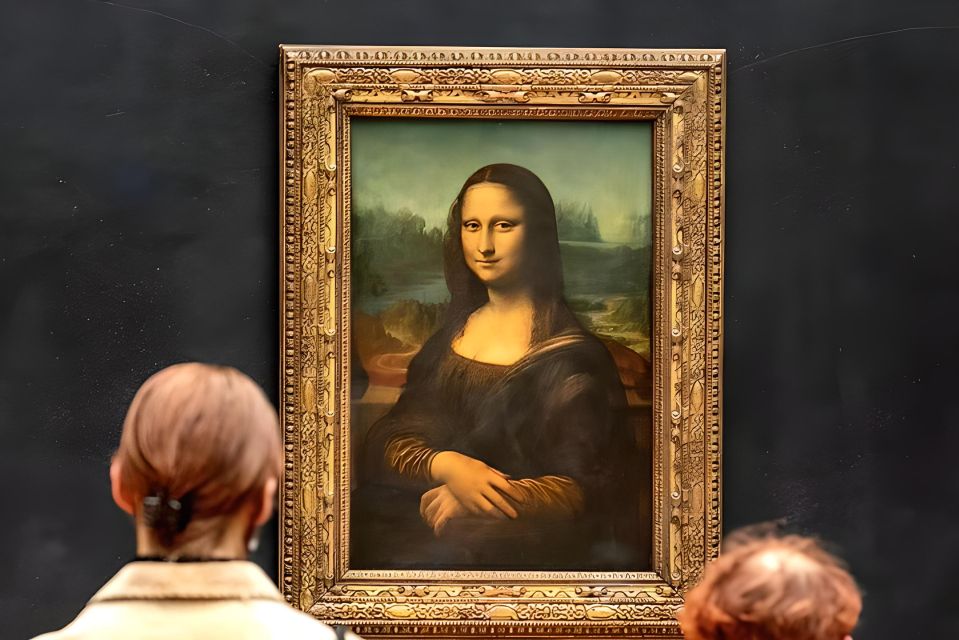
Originally a medieval fortress, the evolution of the Royal Palace at the Louvre embodies a rich tapestry of historical transformations and cultural transitions. The Royal Palace’s royal history dates back to its origins as a defensive stronghold in the 12th century.
Over the centuries, the palace underwent significant architectural evolution, expanding from its fortress foundations to grand kings’ apartments and opulent imperial chambers. Each era brought new additions and modifications, shaping the palace into a symbol of power and prestige.
The architectural evolution reflects the changing tastes and styles of the ruling monarchs, illustrating the transition from a medieval fortress to a magnificent royal residence. This transformation captures the essence of the palace’s role in French history and its significance in the cultural heritage of the country.
From Fortress to Art Haven

Transformed over time, the Louvre evolved from a formidable fortress into a captivating haven of artistry and cultural treasures. The fortress history of the Louvre is a testament to its strategic importance and defensive capabilities.
This evolution into an art haven showcases the richness and diversity of its art collection, attracting millions of visitors annually. The transition from a military stronghold to a sanctuary of creativity has imbued the Louvre with a unique charm that blends history with artistic expression, making it a must-visit destination for art enthusiasts worldwide.
Treasures Within the Museum
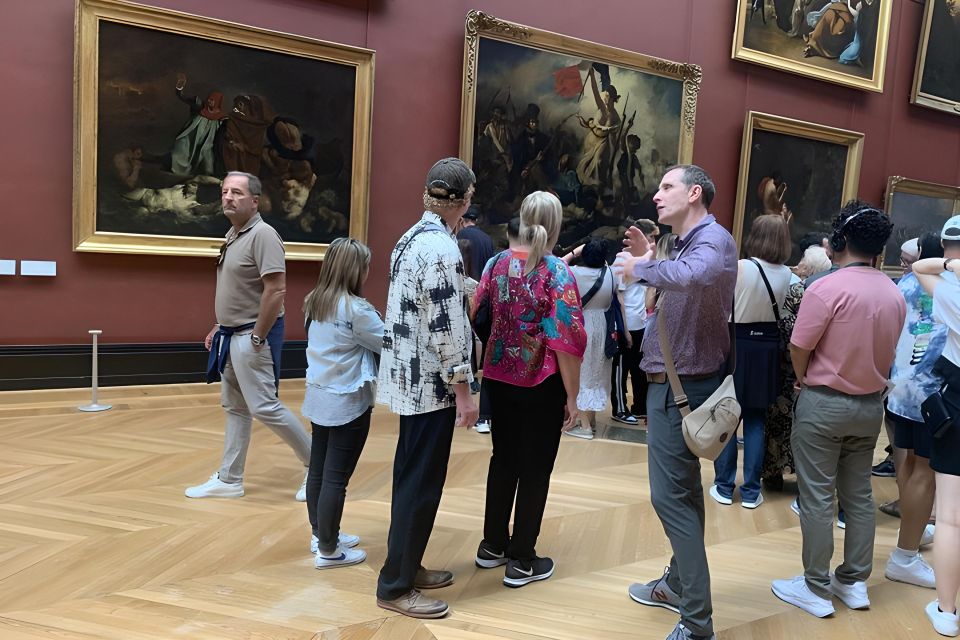
Evolved from its military roots, the Louvre now houses a myriad of artistic treasures waiting to be discovered within its walls. Visitors to the museum are greeted by a vast collection of artistic masterpieces and historical artifacts that span centuries of human creativity and culture.
From iconic paintings like the Mona Lisa and French crown jewels to ancient sculptures such as the Venus of Milo and the Winged Victory of Samothrace, the Louvre offers a breathtaking journey through art history.
Each room within the museum is filled with unique pieces that tell a story of different eras and civilizations, making it a truly unforgettable experience for art enthusiasts and history buffs alike.
Hidden Gems and Notable Artifacts
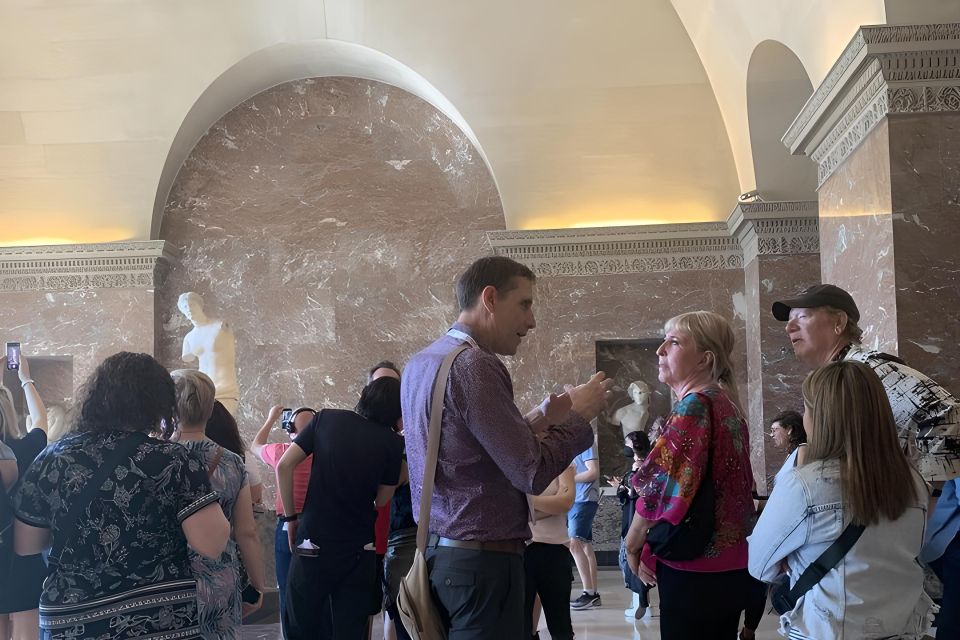
Nestled within the Louvre Museum are hidden gems and notable artifacts that captivate visitors with their historical significance and artistic brilliance. Exploring the museum’s vast collection reveals some of its most remarkable treasures:
-
Notable Discoveries: Visitors can stumble upon lesser-known yet extraordinary pieces like the ‘Psyche Revived by Cupid’s Kiss’ by Antonio Canova, a sculpture depicting the mythological love story.
-
Hidden Masterpieces: The Louvre houses hidden gems such as the enigmatic painting ‘The Lacemaker’ by Johannes Vermeer, showcasing intricate detail and extraordinary skill.
-
Ancient Artifacts: Among the museum’s treasures are ancient artifacts like the Code of Hammurabi, a well-preserved Babylonian law code from around 1754 BC, offering insights into ancient Mesopotamian society.
- Famous Graves of Père Lachaise Cemetery Guided Tour
- Closing Time at the Louvre: the Mona Lisa at Her Most Peaceful
- Eating Paris: Montmartre Food & Wine Tour
- Private Transfer From CDG or ORY Airport to PARIS City
- Private Guided Professional Photoshoot by the Eiffel Tower
- Paris Catacombs Skip the Line Guided Tour
Unveiling the Louvre’s Secrets
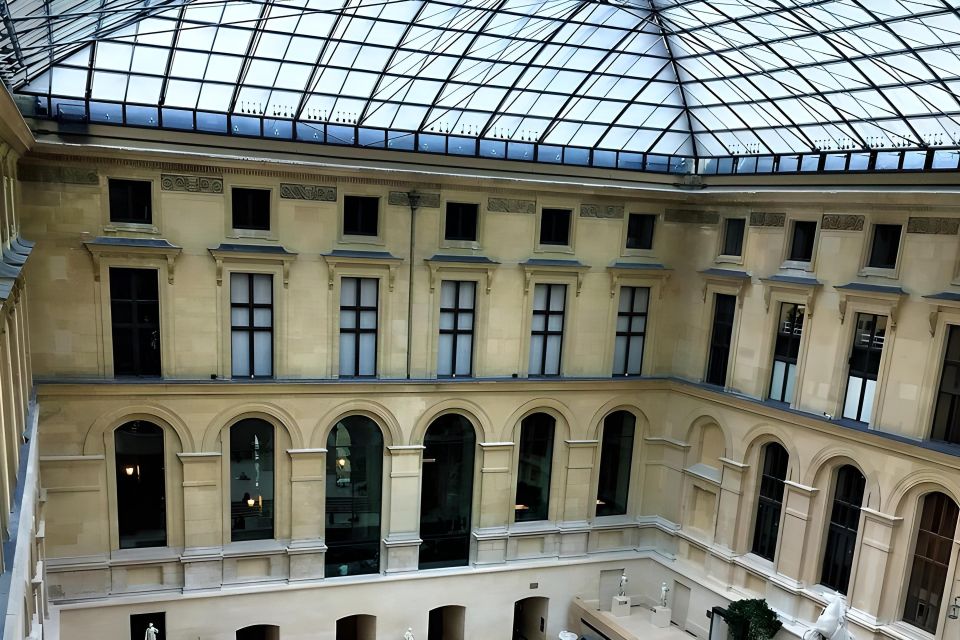
Uncovering the mysteries hidden within the Louvre Museum reveals a tapestry of secrets waiting to be unraveled by eager explorers.
The Louvre holds a wealth of royal secrets, with hidden passages, secret chambers, and intriguing stories that have been preserved through the ages. Visitors can explore the museum mysteries that shroud the history of this former royal palace.
From the enigmatic Mona Lisa to the majestic French crown jewels, each piece in the collection holds a piece of the past waiting to be discovered. As explorers navigate through the corridors and grand halls, they’re met with a sense of wonder and curiosity, uncovering the hidden gems that make the Louvre a treasure trove of history and art.
Modern Experiences at the Louvre
Discover the contemporary allure of the Louvre Museum through its innovative exhibitions and interactive digital displays.
-
Contemporary Perspectives: The Louvre constantly seeks to present art from modern viewpoints, blending historical masterpieces with contemporary interpretations.
-
Artistic Innovations: Visitors can engage with cutting-edge artistic techniques and installations that challenge traditional norms and push boundaries.
-
Cultural Significance: The museum’s commitment to showcasing diverse cultures and art forms ensures a rich and immersive experience for visitors, highlighting the global impact of artistic expression.
These elements combine to create a dynamic environment where visitor experiences aren’t only educational but also inspiring, fostering a deep appreciation for the intersection of art, history, and culture.
Common questions
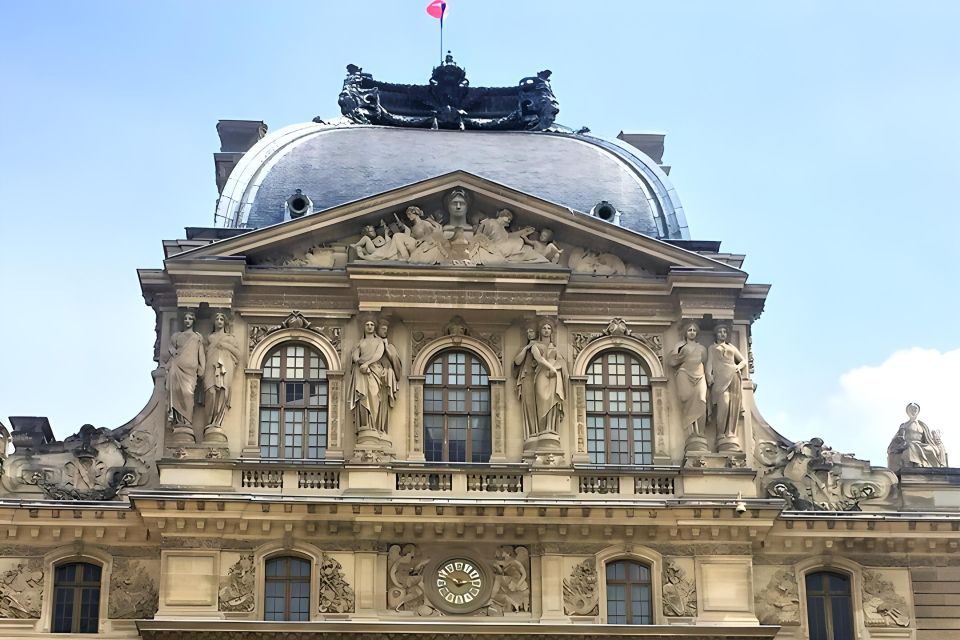
What Are the Best Times to Visit the Louvre to Avoid Crowds?
Peak hours at the Louvre typically occur in the late morning and early afternoon. For a more tranquil experience, visitors should aim to explore during the quieter periods, such as in the early morning or closer to closing time.
Are There Any Specific Dress Code Requirements for Visiting the Louvre?
When visiting the Louvre, there is no specific dress code, but visitors are encouraged to wear comfortable clothing suitable for walking. Cultural attire is appreciated, and it’s essential to adhere to general etiquette guidelines while exploring the museum.
Can Visitors Bring Food and Drinks Into the Museum?
Visitors cannot bring food and drinks into the Louvre Museum. It’s essential to respect the cultural significance and rules. While there are no designated picnic spots inside, guests can enjoy a meal at the outdoor Carrousel Garden following museum etiquette.
Are There Any Restrictions on Photography Inside the Louvre?
Photography policies at the Louvre aim to protect art preservation. Visitors must adhere to restrictions, respecting the masterpieces. Flash photography is prohibited to safeguard delicate artworks. Understanding and following these rules contribute to the museum’s conservation efforts.
Is There a Recommended Route or Tour Path to See the Highlights of the Louvre Efficiently?
For those seeking efficient routes at the Louvre, utilizing audio guides can enhance the experience. They provide detailed insights and help navigate through highlights seamlessly. Visitors will appreciate the convenience and depth of knowledge these guides offer.
Final Words
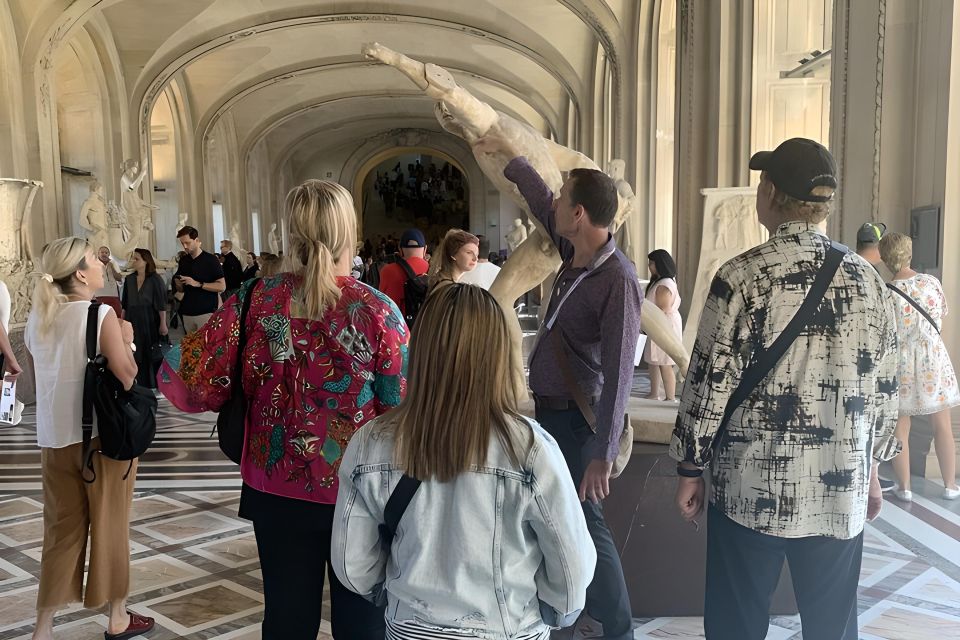
Set out on a journey through time and art at the Louvre with the ‘Insider Louvre: From a Royal Palace to a Museum’ tour. Uncover the hidden treasures and iconic masterpieces within this world-renowned museum, guided by Interkultur Paris.
Explore the rich history and architectural marvels of the palace with a live tour guide, small group sizes, and English language support. Experience the grandeur and legacy of the Louvre like never before.
More Museum Experiences in Paris
- Best of the Louvre Museum Private Tour With Monalisa
- Louvre Museum
- Paris: Army Museum Ticket and Seine River Cruise Combo
- Private Trip From Paris to Visit the Caen Memorial Museum Aboard a Van (4/7 Pax)
- Beyond the Louvre Museum – Self-Guided Audio Walking Tour
- Louvre Museum and Mona Lisa Small-Group Guided Tour
More Tour Reviews in Paris
Not for you? Here's more nearby things to do in Paris we have reviewed
- Paris, Latin Quarter Walking Tour With Audio Guide
- Loire Valley Castles Day Trip With Audio Guided Option From Paris
- Emily in Paris Guided Walking Tour
- Vows Renewal Ceremony With Photoshoot – Paris
- Private Van Transfer From CDG to Airport Beauvais
- Paris: Covered Passages Audio-Guided Walking Tour
- Paris: Luxury Mercedes Transfer to Bayeux
- Best of the Louvre Museum Private Tour With Monalisa
- Paris: Romantic Montmartre Exploration Game
- Paris: Eiffel Tower Tour & Seine Champagne Cruise Combo
- Versailles Private Round-Trip Luxury Transfer From Paris
- Paris Like a Local: Le Marais Self-Guided Tour in a Bag
